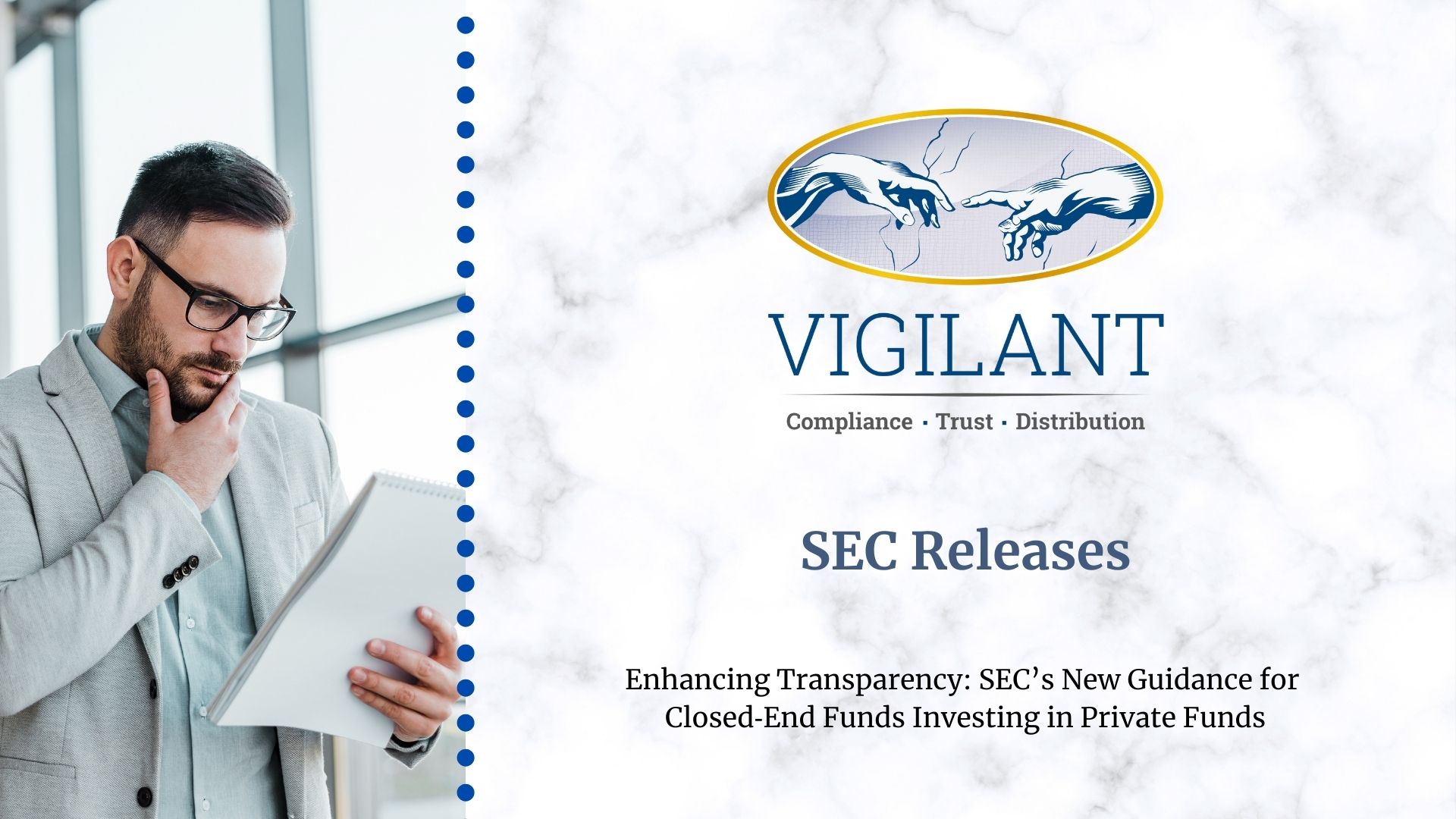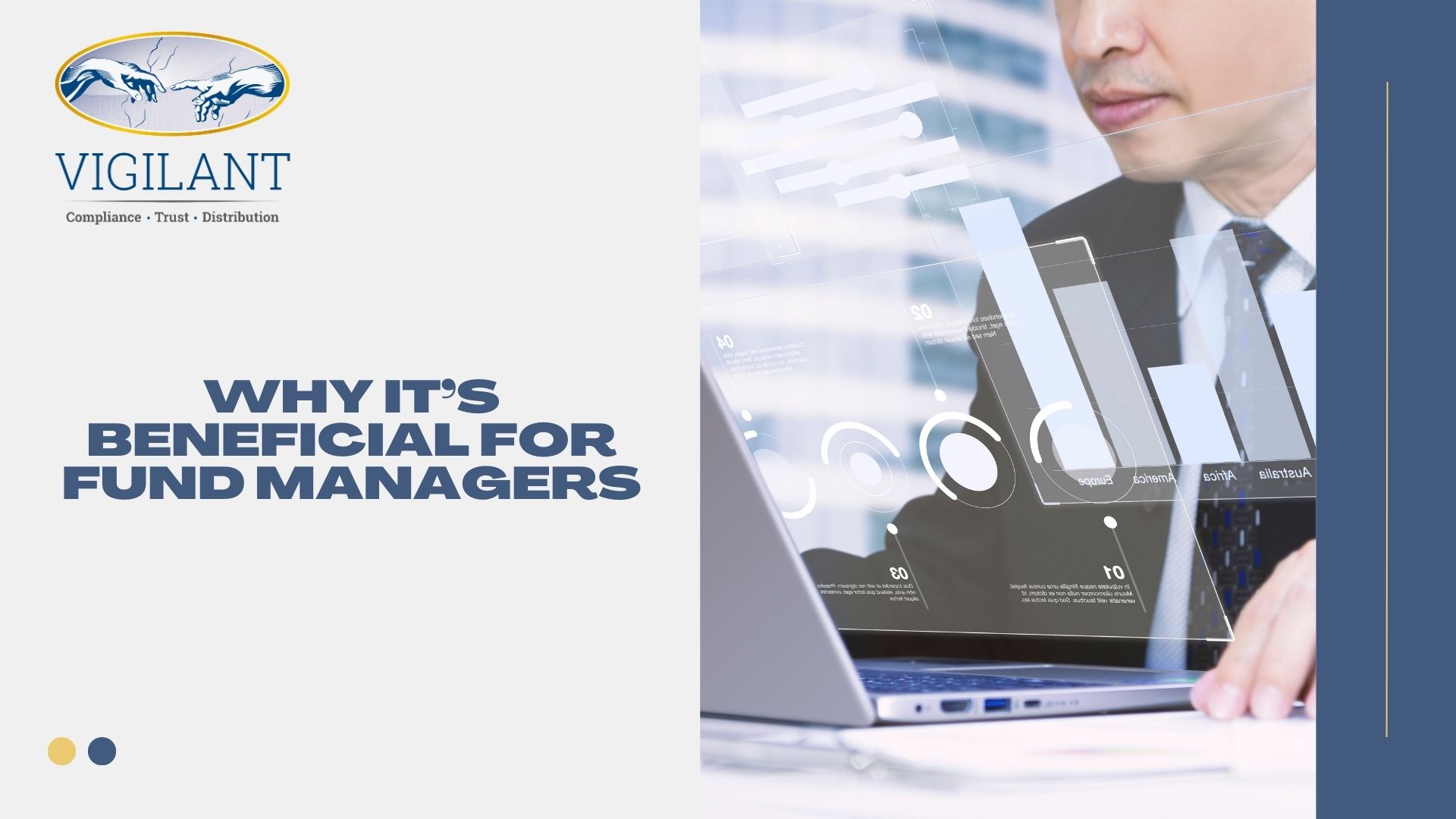Enhancing Transparency: SEC’s New Guidance for Closed End Funds Investing in Private Funds


SEC Releases
Introduction
On August 15, 2025, the SEC’s Division of Investment Management issued Accounting & Disclosure Information (“ADI”) 2025‑16, focusing on Registered Closed‑End Funds that invest in Private Funds (“CE‑FOPFs”).
This guidance refreshes long‑standing commentary and reflects evolving market practices and investor expectations across over two decades of existence since the first CE‑FOPF registration in 2002.


Who This Affects
ADI 2025‑16 is relevant to:
- CE‑FOPF issuers and their Investment Advisers.
- Legal and Compliance Professionals overseeing Fund Disclosures.
- Boards of Directors entrusted with fiduciary oversight.
- Investors and Retail Advisors, particularly those evaluating such Funds for inclusion in portfolios.


Why It’s Beneficial for Fund Managers
- Broader Investor Base: Lifting mandated accredited‑investor or minimum‑investment thresholds may attract a wider set of participants.
- Improved Transparency: Enhanced disclosures around fees, strategies, and risks build investor confidence and differentiation in a competitive market.
- Regulatory Clarity: Clear guidance around filing requirements reduces ambiguity when updating Fund structure or disclosures.
- Trust & Oversight: Emphasizing fiduciary duties reassures investors that, despite indirect Private Fund exposure, governance and protections remain robust.


Compliance Implications for CE-FOPFs
ADI 2025‑16 carries several important compliance considerations that Fund Sponsors, Advisers, Legal Counsel, and Compliance Officers should address:
1. Review and Update Disclosure Practices
- Plain English Disclosures: Compliance teams need to be sure that all prospectuses and shareholder communications, particularly those filed on Form N‑2, are updated to reflect the enhanced expectations for clarity and substance in disclosures around Private Fund investments.
- Key Disclosure Areas:
- Funds will be required to describe their investment process in disclosure documents filed with the SEC.
- Fee layering and netting risk (e.g., how performance fees are treated across Fund-of-Fund structures).
- Liquidity constraints of underlying Funds and how they affect CE-FOPF redemption or distribution policies.
- Valuation practices for illiquid or infrequently traded Private Fund interests.
- Conflict of interest mitigation procedures and Adviser oversight policies.
2. Amendments and Filings
- For Funds currently operating under legacy investment limitations (such as minimum investor thresholds or asset allocation caps), legal and compliance officers should:
- Determine the appropriate filing type to modify or remove such restrictions (e.g., Rule 486(a), 486(b), or a Rule 424 supplement).
- Review whether the proposed change qualifies as material, which would trigger more stringent amendment requirements.
3. Board Oversight and Documentation
- Boards must be engaged in on-going supervision of Private Fund exposure, particularly:
- Risk assessments around underlying Fund liquidity, leverage, and strategy concentration.
- Reviewing due diligence processes for Private Fund selection and monitoring.
- Confirming robust governance frameworks are in place for dealing with conflicts, especially where the Adviser may also manage affiliated Private Funds.
Compliance teams should be sure that board materials and meeting minutes clearly reflect these oversight activities, which could be critical during SEC Examinations.
4. Policies & Procedures Overhaul
- Investment Advisers to CE-FOPFs may need to revise internal compliance manuals to reflect:
- New expectations around Fund-of-Fund risk management.
- Enhanced disclosures and marketing oversight for retail-facing materials.
- Improved valuation and pricing controls for Private Fund interests held on the balance sheet.
5. Monitoring SEC Staff Comments & Examinations
- Although ADI 2025‑16 represents a withdrawal of prior standardized comments (e.g., on accredited investor limitations), the staff still expects heightened disclosure and Fund-specific scrutiny.
- Firms should be prepared for Division of Investment Management or Division of Examinations reviews focusing on how these Funds are marketed and how their Private Fund exposures are communicated to investors.


Conclusion: Supported by Leadership and Alignment with SEC Oversight
This ADI underscores the Division of Investment Management’s commitment to advancing clarity and investor protection without imposing unnecessary restrictions.
Although the release reflects staff views, not formal SEC rules, it aligns with the SEC’s broader agenda under its current leadership. Notably, SEC Chair, Paul Atkins’ remarks on evolving oversight and market transparency echo similar themes of adapting regulatory approaches in light of changing Fund structures.
These updates reflect a unified regulatory vision of the SEC Chair and Division of Investment Management leadership, supported by the President, with a clear focus on expanding access to retail markets, strengthening transparency, reinforcing investor confidence, and ensuring that disclosure practices keep pace with market evolution.















